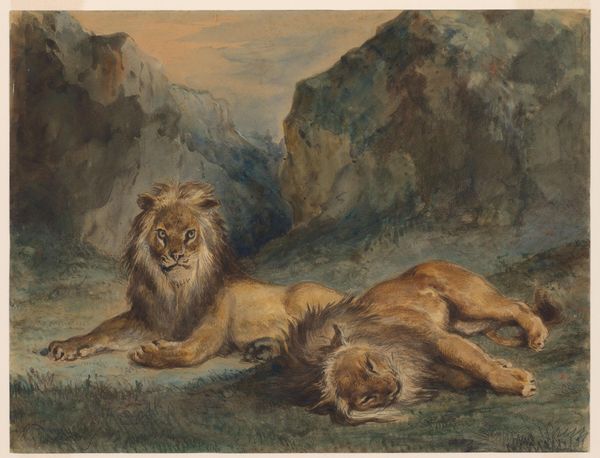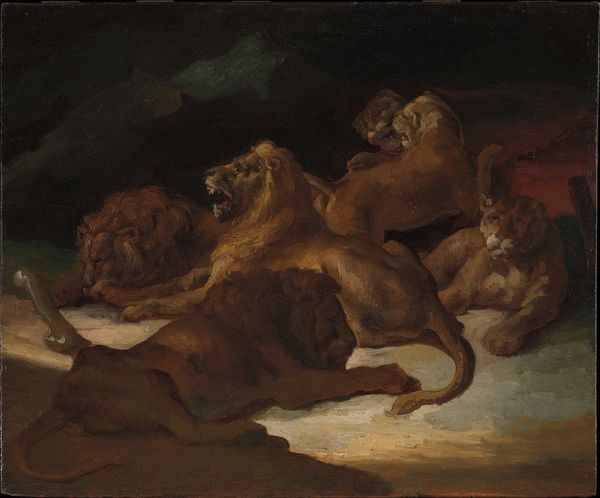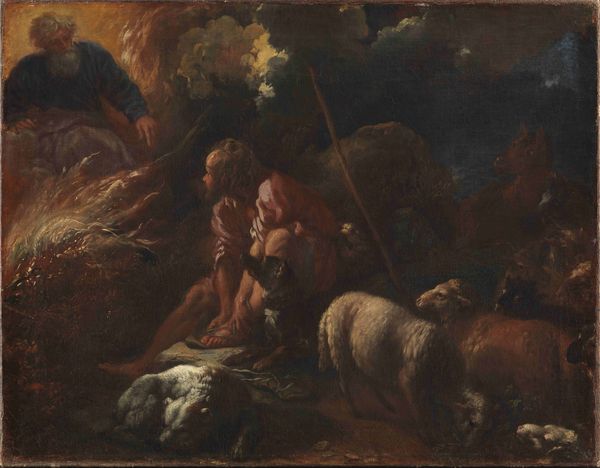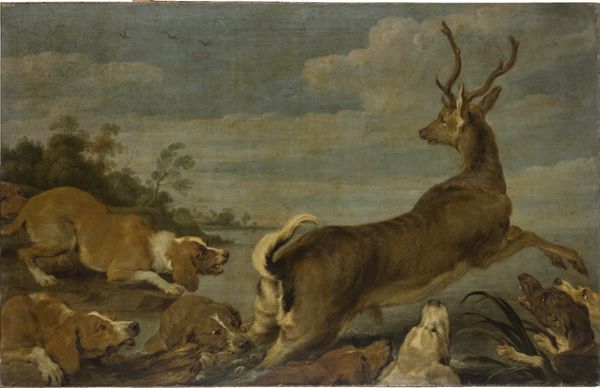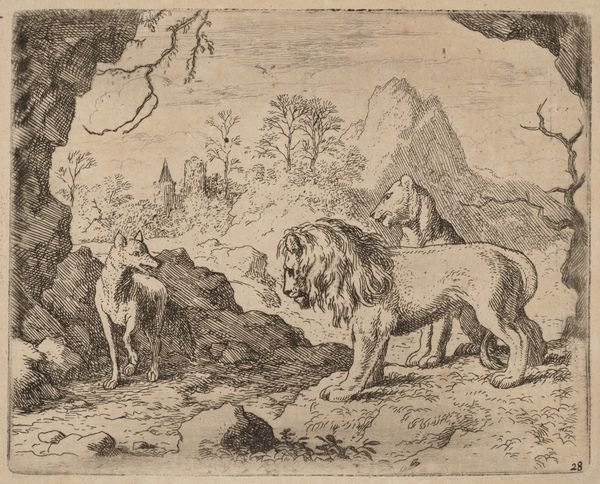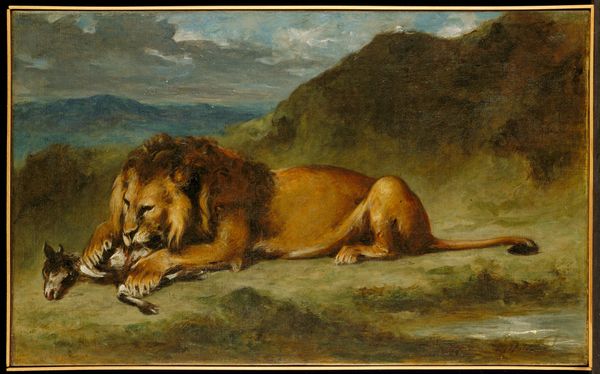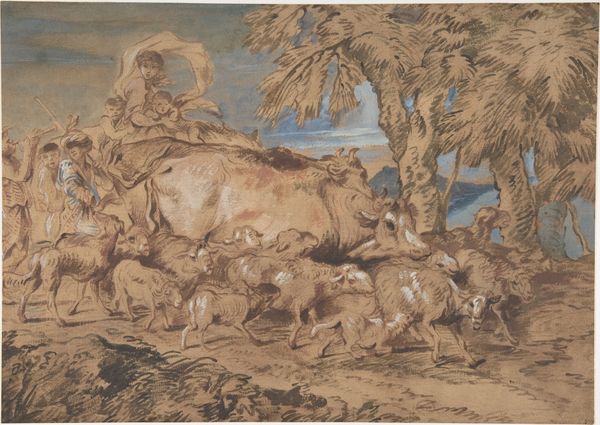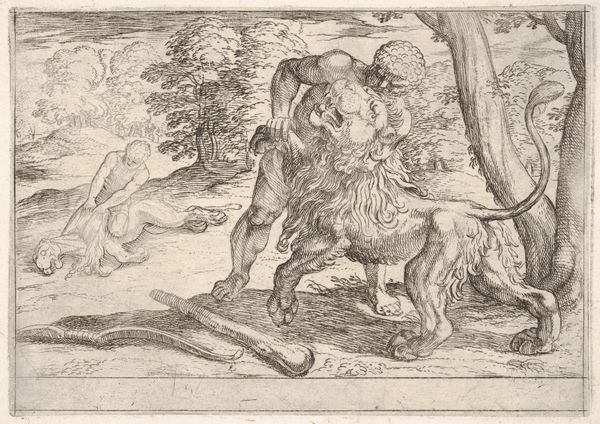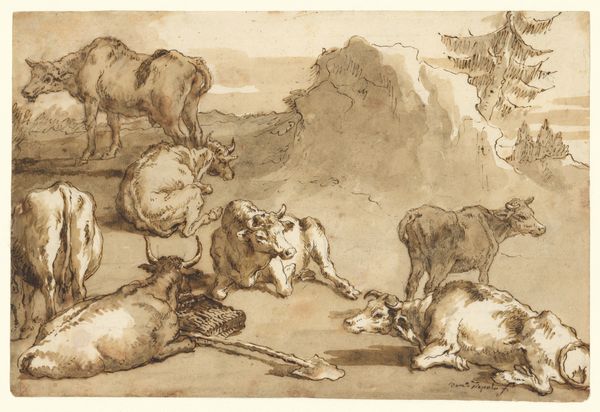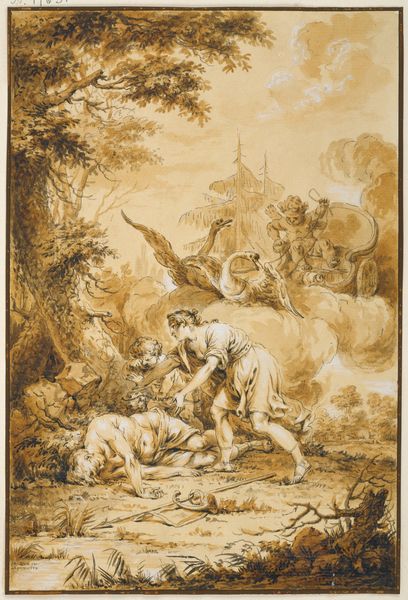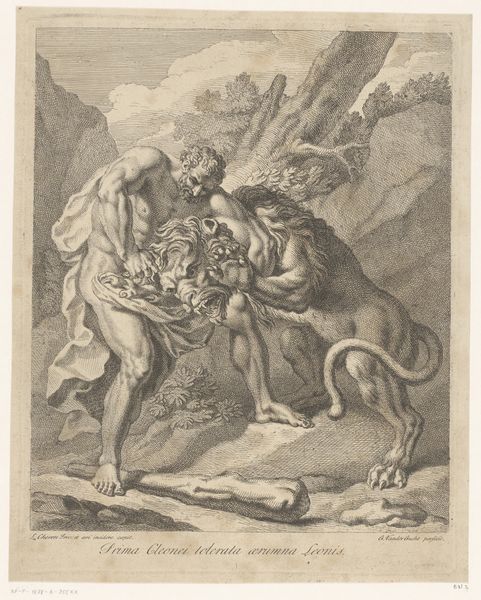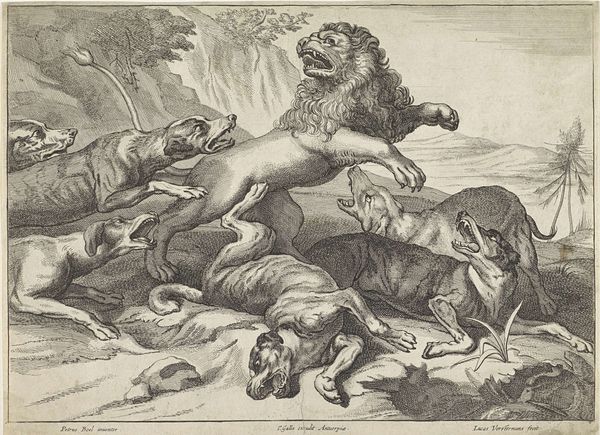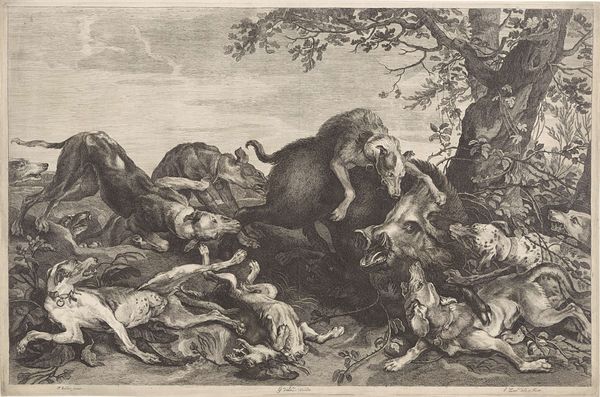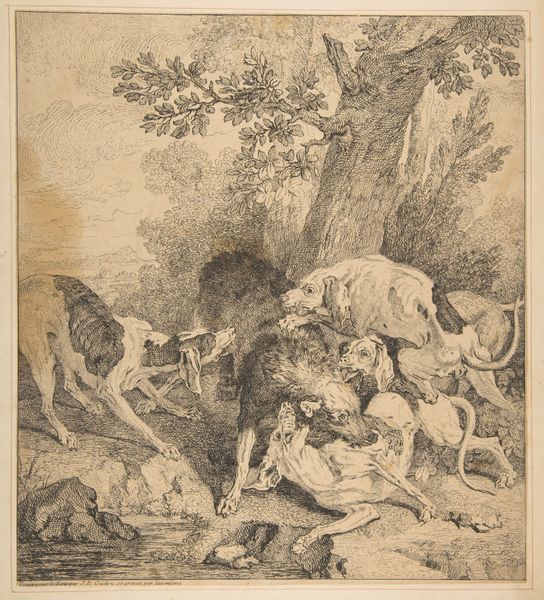
oil-paint, oil, canvas
#
baroque
#
animal
#
oil-paint
#
oil
#
landscape
#
figuration
#
oil painting
#
canvas
#
15_18th-century
#
realism
Dimensions: 62.7 x 51.2 cm
Copyright: Public Domain
Curator: Up next we have "Landscape with a Lion Family," an oil on canvas completed in 1716 by Johann Melchior Roos. It's part of the Städel Museum's collection. Editor: Well, that's surprisingly…domestic. I was expecting more roar and less...cuddle. The color palette is muted, all earth tones, which softens the power I'd associate with lions. Curator: Exactly! Roos often depicted animals in these calm, pastoral settings, imbuing them with a gentleness that contrasts with their wild nature. Lions, usually symbols of power and royalty, are rendered here as simply a family, interacting intimately. Editor: It almost feels like a stage. The lion family is definitely the main event, carefully lit, while the landscape, even with its suggestion of mountains in the distance, feels like a backdrop. A bit… artificial? Curator: Interesting. You could interpret the rocky overhang and distant mountains as both framing the figures and referencing the wild, untamed world from which these animals come. However, Roos was painting for an aristocratic clientele who likely never saw a lion outside a menagerie. So this may be his effort to both celebrate and domesticate the ‘king of beasts’. Editor: Makes sense. Look at the way the lioness interacts with the lion—it's more tenderness than ferocity. It really humanizes them, doesn’t it? Takes the fear away and replaces it with...familiarity. Is it supposed to have symbolic meaning in this way? Curator: Oh absolutely. Remember this is a baroque work, that period's artistic and emotional excess is balanced with familiar touches to communicate power to aristocratic clientele who desired artwork in the fashion of that time. It offers an accessible narrative. That sense of peace and control over nature would appeal greatly. Editor: I guess I'm just left with the impression of seeing something almost contradictory—power diffused by tenderness, the exotic rendered domestic. It sits with me in unexpected ways. Curator: Indeed. It's a fascinating insight into how artists interpreted and presented the natural world—especially apex predators—to a specific audience. Thanks for sharing your thoughts, it opens up this piece even further.
Comments
No comments
Be the first to comment and join the conversation on the ultimate creative platform.
